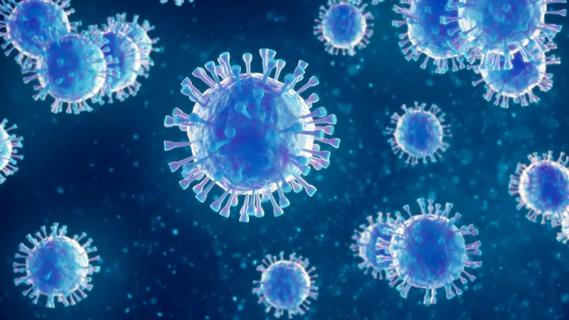Investigating asymptomatic parasitemia will also contribute to knowledge of disease immunity

Globally, malaria causes over 250 million cases of disease and nearly 600,000 deaths every year, with pregnant women and young children being the most susceptible to severe disease and death. “It’s a pretty large burden of morbidity and mortality,” says Katherine Dobbs, MD, a pediatric infectious disease physician at Cleveland Clinic.
Advertisement
Cleveland Clinic is a non-profit academic medical center. Advertising on our site helps support our mission. We do not endorse non-Cleveland Clinic products or services. Policy
“The morbidity includes things like lost time from school and work, chronic anemia and its effects, and long-term sequelae such as hearing impairment, seizure disorders, or developmental delay, so there’s a large burden of disease among survivors as well.”
As a medical school student, Dr. Dobbs spent several weeks in Kenya at a hospital involved in studying severe malarial anemia in young children. “I saw children die from the disease and witnessed how devastating the disease is on families and communities there, so that inspired me to do similar work,” she says.
Currently, Dr. Dobbs is involved in several active clinical studies focused on the impact of malaria exposures on innate immune development in infants and young children who live in malaria endemic areas. “We’re studying how previous exposures to malaria affect the immune response to not only subsequent malaria exposures, but also to other infections, as well as to vaccines,” says Dr. Dobbs.
These studies will contribute to Cleveland Clinic’s current work in vaccine development and infectious disease by adding to the understanding of naturally acquired immune response to malaria infection. “The results can be also used to inform development of the next generation of vaccines that will have improved efficacy and durability,” Dr. Dobbs says.
One of the studies is NIH-funded and follows school-age children in Kenya with asymptomatic parasitemia every two weeks for 16 weeks, identifying which children clear the infection, which develop fever and symptomatic disease, and which continue to have chronic parasitemia. The goal is to pinpoint the innate immune mechanisms that convey tolerance to the parasite by implementing epigenomic and transcriptomic studies comparing the regulation of gene expression programs in monocytes from these children.
Advertisement
The children enrolled in this study live in a high transmission area and are between 8 and 15 years old. They are screened with a finger prick blood sample to determine if their blood smear is positive for malaria. “All the children are healthy, and about 25% will have a positive blood smear or a rapid diagnostic test, so it’s a lot of kids,” says Dr. Dobbs. The research team performs as much of the lab work in Kenya as possible, preparing the immunological studies and the ATAC libraries in the lab there.
Dr. Dobbs is also working on two projects in Benin with Celia Dechavanne, PhD, at the French National Research Institute for Sustainable Development to study subclinical malaria. The first involves using samples from a cohort of people of all ages with subclinical malaria who were followed for nine weeks, comparing monocyte and T cell interactions and expression of inhibitory receptors. The researchers’ focus is particularly on children one to 15 years old.
“We will also analyze potential immune evasion strategies that the parasite employs that may impact monocyte functions,” Dr. Dobbs says. This study’s findings will allow further understanding of which immune regulatory networks are associated with chronic parasitemia, transient asymptomatic parasitemia, and symptomatic malaria.
In the second project, the two researchers are analyzing samples Dr. Dechavanne collected from a cross-sectional cohort of pregnant Beninese women at delivery. By examining cord blood monocyte functions, gene expression, and epigenetics, the pair are investigating how exposure to placental malaria affects infant immune development. “We hope to get funding for a follow-up study that would be a multi-center study in Togo and Kenya to study how placental malaria exposure affects infant immunity and risk for malaria and other infectious diseases in the first two years of life,” says Dr. Dobbs.
Advertisement
A large piece of this research is capacity building, according to Dr. Dobbs, which she would like to see grow as much as possible. She wants to continue to work with overseas colleagues to train scientists from low- and middle-income countries with the goal of ensuring that the research agenda addresses the needs of the communities that are most impacted by malaria and other infectious diseases.
In the future, Dr. Dobbs hopes to find funding for studies on how exposure to malaria in the first few months of life affects responses to malaria vaccines. “There’s some evidence that suggests these previous exposures to malaria negatively impact malaria vaccine responses, so we hope to enroll a cohort of children from western Kenya at birth and follow them in the first two years of life to really quantify how those early malaria exposures affect their vaccine responses,” she says. These results could help inform malaria chemoprevention and vaccine strategies and boost response.
As a leading institution in research that combines excellent clinical care with innovative science and discovery, Dr. Dobbs believes Cleveland Clinic is well-positioned to lead this work. “The leadership in pediatric infectious diseases is extremely patient focused, ensuring that the needs of children and their families are being met so that we’re providing excellent clinical care while staying at the forefront of medical advancements,” she says. “In addition, the lab-based and translational research programs at the Lerner Research Institute include world leaders in immunology and pathogen research, so it’s a great mix for this kind of work.”
Advertisement
Advertisement
Advertisement

Anti-viral immunity identified a novel mechanism in necroptosis

Integrated care model reduces length of stay, improves outpatient pain management

A closer look at the impact on procedures and patient outcomes

Experts advise thorough assessment of right ventricle and reinforcement of tricuspid valve

Study also finds that 26% of children with cancer have mutations in DNA repair genes

A closer look at current uses and future opportunities

Experts are challenging the one-size-fits-all paradigm

Quality improvement project addresses unplanned extubation